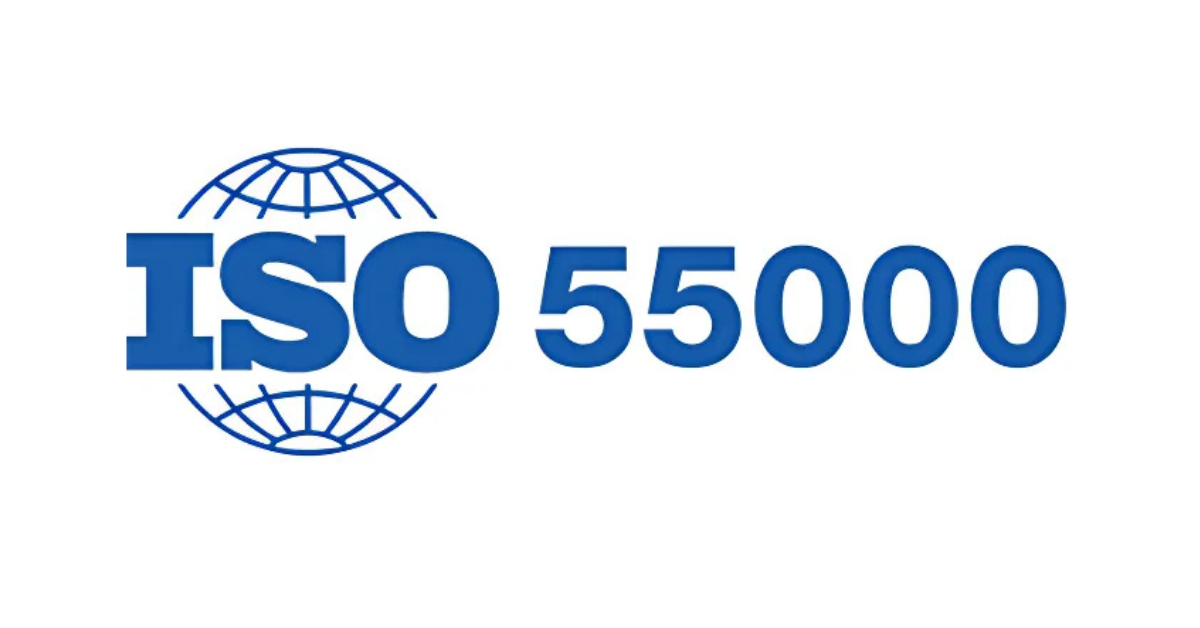ISO 55000: The Complete Guide to Intelligent Asset Management
In an increasingly competitive market, efficient asset management is crucial to the success of companies. ISO 55000, an international standard that defines the requirements for an asset management system, offers a robust framework to optimize performance, reduce costs and ensure sustainability.
This article explores the key aspects of ISO 55000, from its definition and benefits to best practices for its implementation.
Understand what is ISO 55000
It consists of an international rule that encompasses the management of business assets from any source. This certification was launched in January 2014 and was based on PAS 55000 (Publicly Available Specification), whose content was presented by the British Standards Institution in 2004, with a focus on physical asset management.
It is worth noting that the policy asset Management its priority is to establish a set of coordinated initiatives to obtain the greatest possible return on the investments made by a company.
For this objective to be achieved, it is essential that there is an alignment between management and business goals. Thus, it is possible to create a more solid and broad mindset to achieve remarkable performance.
Benefits of ISO 55000
Implementing ISO 55000 offers several benefits to companies:
- Improved financial performance: Optimizing asset usage, reducing costs and increasing return on investment.
- Making more assertive decisions: Accurate and reliable information for strategic decisions on asset investments.
- Sustainability: Asset management with a focus on reducing environmental and social impacts.
- Social responsibility: Use of assets responsibly, minimizing risks and negative impacts.
- Improved reputation: Demonstration of commitment to efficient asset management and sustainability.
Learn to apply asset management with intelligence
There are a number of factors that must be taken into account for implementing ISO 55000 to be implemented in accordance with best market practices. For this to be better understood, we will point out important guidelines of the standard that need to be obeyed in the search for better results. Follow up!
goals
Regardless of the benefits provided, the implementation of ISO 55000 needs to be related to very well-defined objectives. This becomes feasible using the SMART technique (Specific, Measurable, Attainable, Realistic and Time-Bound).
She is responsible for making goals specific, measurable, attainable, realistic and timely. By using this technique, it is possible to evaluate assets based on parameters such as life cycle, costs, compliance, productivity and sustainability.
strategic points
Goals are only achieved when efficient and easy-to-apply strategies are adopted. This posture is vital so that business objectives are aligned with asset management.
Thus, a company can establish, in a mature way, the deadlines and goals to be achieved, considering all the work related to the administration of assets. This contributes to the best use of the team's assets and potential.
Documented actions
For asset management to be implemented within the requirements of ISO 55000, it is very important that all initiatives are documented. This procedure should cover operational plans, maintenance work and activities linked to capital investment (improvement, renovation, overhaul and replacement) and the use of financial resources.
It is worth mentioning that it is highly recommended that there is a periodic review of the adopted documentation, so that an alignment between the objectives of the different areas is maintained, an increasingly necessary aspect in the corporate world.
Focus on leadership
It is imperative that the board be involved in the implementation of ISO 55000 and the adoption of an asset management policy that prioritizes deadlines, scope and responsibilities. From a closer look at the directors, it becomes easier to delegate those responsible for supervising the stages of development, implementation, operation and permanent improvement of the standard's requirements.
However, directors need to remain focused on the performance achieved through asset management, as this contributes to team engagement and the achievement of proposed objectives.
planned activities
Good planning needs to consider both short-term and long-term risks and opportunities. In addition, it must ensure that asset management is properly linked to other business processes, so that work is performed correctly and quickly.
Support
The role of this department is to verify that there are resources and people to perform a task. By properly executing this initiative, support collaborates to raise the level of commitment and engagement of the team with the business objectives.
Operation
This procedure is necessary to implement ISO 55000, as well as to validate actions related to process control, risk monitoring and necessary changes for the evolution of services.
Analyze
This activity aims to identify and use metrics to assess the financial performance of asset management. It also involves carrying out audits to verify compliance with the requirements of the ISO 55000 standard.
Enhancement
It is an essential step in correcting weaknesses and putting initiatives aimed at continuous improvement into practice.
Understand why it is important to implement ISO 55000
It is undeniable that betting on an international standard for asset management is a strategic decision. To assess the best path to take, it is worth knowing the main benefits of ISO 55000 for organizations. Read with attention!
More expressive financial performance
Keeping the value of assets preserved without jeopardizing the achievement of corporate goals is one of the advantages of intelligent asset management. This initiative also helps to reduce costs and provide a faster financial return on applications.
Better investment decisions
Based on a better structured asset management, it is possible to make more assertive decisions about investing in solutions (software, equipment, etc.) to achieve a yield within or above expectations.
Stronger corporate sustainability
With differentiated asset management, a company is better able to reduce costs and expand profitability. In this way, it is better able to invest in what is really necessary to achieve sustainable growth and maintain a good image with stakeholders.
More focus on social responsibility
In the case of the industry, using equipment that reduces the emission of pollutants is one of the great benefits of improving asset management. By putting into practice actions aimed at preserving the environment, a company reinforces social responsibility, which is a key element in building and consolidating a good reputation.
Understand why seek support to implement ISO 55000
Despite the great advantages provided, the work for implementing ISO 55000 is quite complex. Therefore, it is essential to have specialized support to assess how to improve asset management.
With qualified advice, it becomes easier to engage employees and show, in a clear and transparent way, the benefits of changes. Certainly, a high level of support makes it easier to achieve good results with the implementation of the standard.
Historic
PAS 55 was originally produced in 2004 by various organizations under the leadership of the Institute of Asset Management. It then underwent a substantial review with 50 participating organizations from 15 industry sectors in 10 countries. PAS 55:2008 (available in English and Spanish) was released in December 2008 together with a toolkit for self-assessment against the specification.
PAS provided guidance and a checklist of 28-point good practice requirements in asset Management physical; this was typically relevant to gas, electricity and water utilities, road, air and rail transportation systems, public facilities, process industries, manufacturing and natural resources. It was equally applicable to the public and private sectors, regulated and unregulated environments.
The standard is divided into two parts:
- Part 1 – Specification for the optimized management of physical infrastructure assets;
- Part 2 – Guidelines for the application of PAS 55-1.
It was also accompanied by a comprehensive Competency Framework for asset managers.
The ISO 55000 series
Established in August 2010, the ISO 251 Project Committee held its first plenary meeting in Melbourne, Australia in early 2011; their final meeting was in Calgary in early 2013. After nearly four years in development, three international standards (55000/1/2) were released in London on February 5, 2014:
- ISO 55000:2014 Asset Management – Overview, principles and terminology;
- ISO 55001:2014 Asset Management – Management Systems – Requirements;
- ISO 55002:2018 Guidelines for the application of ISO 55001 (see below for the 2018 update):
These patterns are available in English, French, Spanish, Russian, Chinese, Japanese, Dutch, Swedish, Danish, Portuguese (Brazil) and Portuguese (Portugal), Farsi, Serbian, and Finnish. In 2015, the ISO 251 Technical Committee was created to continue working on Asset Management standards and to evolve the three existing standards. In 2016, the formal revision process of ISO 55002 was launched. In 2017, two new projects were launched:
- ISO/TS 55010: Guidance on Aligning Asset Management, Finance and Accounting (published September 2019, see below);
- ISO 55011: Guidance on the development of government asset management policy (2021 target).
ISO 55002:2018
In November 2018, a revised and expanded version of ISO 55002:2018 was released. General improvements include expanded detailed guidance for each clause of the 55001 requirements document and clarification of each requirement’s contribution to the four ‘fundamentals’ of asset management: Value, Alignment, Leadership and Assurance. It also describes how to apply the ISO 55001 requirements to key asset management domains:
- The concept of “value” in asset management;
- The scope of the Asset Management System;
- The Strategic Asset Management Plan;
- Asset management decision making;
- Risk management in the context of asset management;
- Finance in asset management;
- ISO 55001 scalability for organizations of all sizes.
ISO/TS 55010:2019
In September 2019, ISO/TS 55010:2019 was released. This Technical Specification is a guideline that enables organizations to better understand why and how alignment between finance and non-finance functions is important to derive value from assets.
endorsed evaluators
O Institute of Asset Management developed endorsement schemes to recommend competent evaluators and training providers. You Worldwide Partners in Asset Management have developed a Certified Asset Management Assessor (CAMA) certification scheme based on the Global Asset Management and Maintenance Forum's Competency Specification for an ISO 55001 Asset Management System Auditor/Assessor.
Contact us and discover how we can transform your challenges into results.
Tags: ServiceNow, Snow Software, Software Asset Management, Software Asset Management, SAM, FINOps, ITAM, ITSM, Flexera, Cloud Management governance framework, decision making, stakeholders, maintenance software, cost reduction, adoption of standard, your company's assets, practical application, management practices, performance evaluation, ISO certification, international standards, management system standards, free materials, organizational sustainability, management process, asset management standards, maintenance management, continuously improve, iso standards, management standards, international standards, ISO, best practices, application of ISO, good practices, publicly available specification, decision making.


